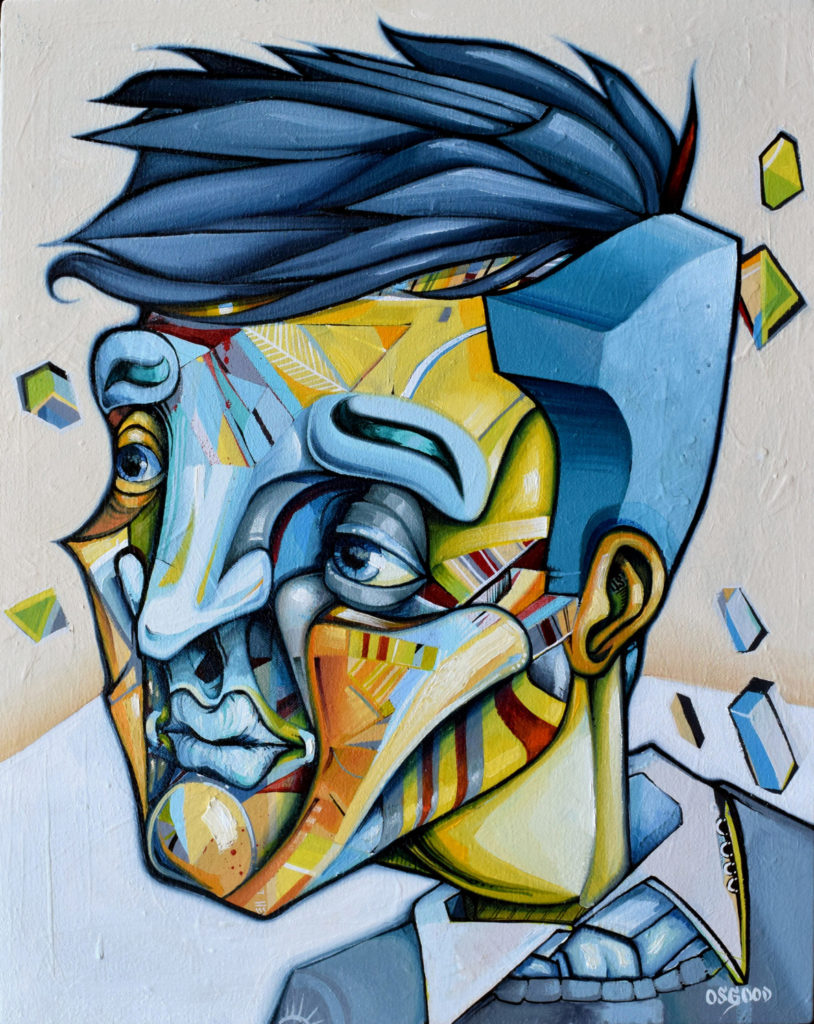
The process of representation is shaped by social and cultural forces and systems of power. This lesson will examine the different types of representation used in the humanities, address the role of the humanities in creating representations, and explore the socio-cultural politics of representing and being represented in the humanities.
Lesson Objectives
- identify the role of symbols and representation in the humanities
- interpret symbolic meanings through different mediums in the humanities
- analyze the relationship between symbols, representation and power in the humanities
Symbols and Representation
Humans have a unique capacity to communicate meanings through representation, the process of producing symbols to represent ideas. Symbolic representation allows people to communicate about the past, present and future, and it also provides a means of conceptualizing abstract and intangible mediums such as feelings and emotions as well as philosophy, math, physics, and more.
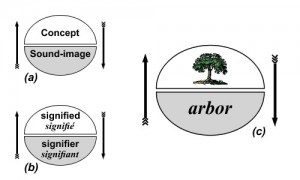
between signs and signifiers.
Humans create symbols by assigning meanings to arbitrary signifiers. This means that the symbol itself does not possess an inherent quality or trait associated with the meaning it represents; the meaning has been assigned to the symbol by the creator. Consider language as an example. Language is a complex system of arbitrary symbols and their associated meanings (Saussure 1911) . Right now, you are looking at a collection of arbitrary symbols called ‘letters’ which are arranged together to form ‘words’ that are associated with meanings. There is nothing inherent to these letters that indicate their meanings. At some point in our lives, we both learned to associate these symbols with the same meanings, and through practice, we can now effortlessly translate the symbols into meanings without realizing we are doing it. It is through our shared knowledge of this collection of symbols and meanings, called ‘English,’ that we are able to communicate ideas about the past, present and future.
Can you understand the symbols and meanings below?
مع نفس المعاني، ومن خلال الممارسة العملية، يمكننا الآن ترجمة جهد الرموز والمعاني دون أن يدركوا أننا نفعل ذلك. ومن خلال معرفتنا المشتركة لهذه المجموعة من الرموز والمعاني، وتسمى باللغة الانجليزية، ونحن قادرون على توصيل الأفكار عن الماضي والحاضر والمستقبل
Or these?
Δεν υπάρχει τίποτα που είναι συνυφασμένοι με αυτά τα σύμβολα που δείχνουν νοήματα. Σε κάποιο σημείο στη ζωή μας, εμείς οι δύο μάθει να συνδέσει αυτά τα σύμβολα με τα ίδια νοήματα, και μέσα από την πράξη, μπορούμε τώρα να μεταφράσει αβίαστα τα σύμβολα και τις έννοιες, χωρίς να συνειδητοποιούν το κάνουμε.
If you do not understand the system of symbols depicted in the above paragraphs, it is because you never learned to associate the system of arbitrary symbols with their assigned concepts or meanings. This shows how associations between symbols and meaning vary cross-culturally according to the unique experiences shared within a community.
Symbolism and representation take many different forms. Writers use symbolism to strengthen their writing, making it more interesting and adding a layer of deeper meaning. Symbolic interpretation of religious scripture has a very long history. In the case of Christianity, for example, Bruno Barnhart (1989) points out that symbolic interpretation was the dominant mode of religious study for the first thousand years of Christian history. He argues that symbolism in the biblical narrative gives z deeper level of significance beyond the literal meaning.
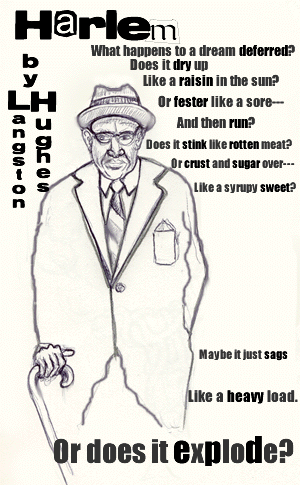
Since ancient times, symbolism has been pervasive throughout all forms of art and literature as objects, colors, and scenarios have been used to represent meanings intended to establish an aura or mood that is not captured through simple literal translation. Plants, animals, weather, shapes and colors are common sources for symbol-making that have been used to convey complex meanings, ideas or a set of ideas.
The poem ‘Harlem,’ by Langston Hughes about the African-American experience during the first half of the 20th century, uses objects like ‘a raisin in the sun’ and a ‘festering sore’ to communicate what happens when dreams are put off or deferred. Hughes’s poem moves beyond simply describing the details of a scenario; through symbols he communicates complex emotions and feelings. This provides the reader an opportunity to connect with Hughes through the shared experience of what it feels like to have a dream deferred, or it also helps a reader empathize with the experience of another human being.
It is important to note, however, that symbols and meanings not only vary cross-culturally, the same symbol can also be used differently to communicate contradictory meanings. The color red, for example, may be used to communicate emotions such as anger, power, or anxiety while at the same time it can also represent love or embarrassment in different creative scenarios. In his short fictional story, The Red Room, Paul Bowles describes a red room within a villa that has a particularly odd feeling. Once the reader learns of the significance of the room, the color red, lends a creepy sinisterness. After reading the story, it seems unlikely that the colors mauve, beige, or blue would provide the same effect for Bowles. This is why it is important to not only learn about and identify the many different uses and modes for symbol-making, it is just as significant to situate symbology within its specific context.
It is impossible to thoroughly explore symbolism within a single lesson, or even a single semester. For now, however, we will take a brief look at a few of the most common types symbolic practices in the humanities and then move on to interrogate the ways that symbolism and representation can be situated within systems of power relations.
Symbolic Practices
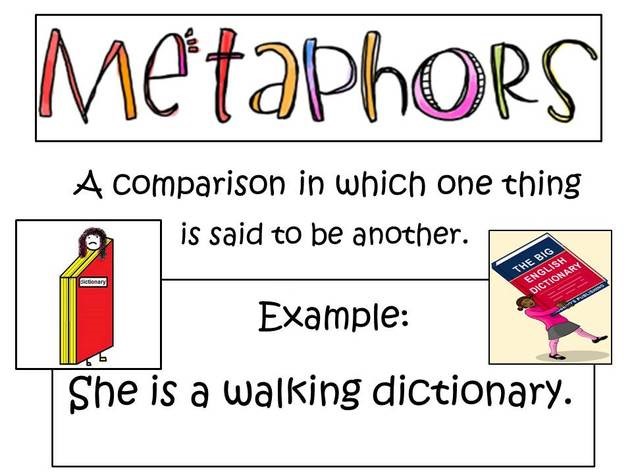
A metaphor is a figure of speech in which a word or phrase is applied to an object or action to which it is not literally applicable. A metaphor may provide clarity or identify hidden similarities between two different ideas. Metaphors are often compared with other types of figurative language, such as antithesis, hyperbole, metonymy and simile.
‘My love is like a red, red rose’ by Robert Burns (1759-1796) is one type of symbolism used in literature to represent romantic love, and more than 200 years later it continues to represent love in the primetime TV series, The Bachelor. Both metaphor and simile use comparisons between two objects or ideas,
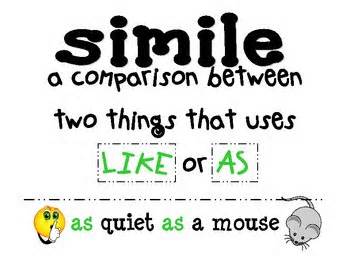
A simile makes a comparison of similarities between two different things. Unlike a metaphor, a simile draws on resemblance and relies on words such as “like” or “as” to make a direct comparison. Simile adds beauty and effect to literature. Simile can add appeal and attention to the senses by encouraging the imagination to envision what is being communicated. It also infuses a life-like quality by compelling readers to relate feelings and personal experiences. This makes it easier for the readers to understand the moods and meaning of a literary text. In Lord Jim, Joseph Conrad used simile to compare the helplessness of a soul to a small bird in a cage.
“I would have given anything for the power to soothe her frail soul, tormenting itself in its invincible ignorance like a small bird beating about the cruel wires of a cage.”
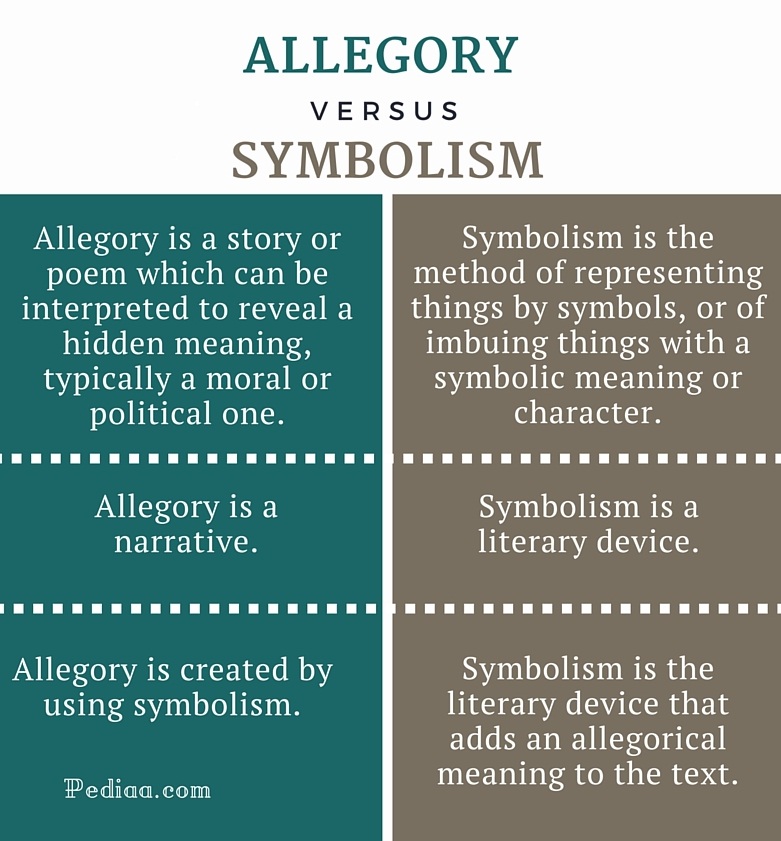
Allegory is another type of symbolism found in literature where the use of story elements such as the plot, setting, characters or objects are used to symbolize something else. George Orwell’s 1945 novel Animal Farm, uses allegorical meanings to make a commentary on oppressive institutions, and this type of symbolism remains throughout the entire literary work. In the plot of Animal Farm, the farm animals rise up against their human masters, and this mirrors and critiques the political events in Russia in the early 1900s. The animal characters symbolizing real-life political figures such as pig named Napolean, who takes charge.
A parable is a short story that typically ends with a moral lesson. Common parables include The Boy Who Cried Wolf, The Turtle and the Rabbit, and The Good Samaritan. Parables rely on symbolism, similie, and metaphor to communicate a complex lesson in a succinct narrative. Parables are often used in religious texts such as the Upanishad, the Torah, the Bible, and the Quran.

In the second chapter of the Quran, (Al Baqra 2: 259) for example, there is a story of a man who begins to doubt the ability of God to resurrect as he passes through a place where people died. Subsequently, God caused him to die, and then resurrected him after a hundred years. When God asked the man how long he slept, he replied only a day because the food he brought with him was still fresh. The man’s donkey, on the other hand, became a skeleton. God joined the bones, muscles, flesh and blood of the donkey and brought it back to life. This Islamic parable aims to teach a moral lesson in three ways: 1. God has control over all things and time; 2. God has power over life, death, resurrection and no other can have this power; and 3. Humans have no power, and they should put their faith only in God. Parables are great teaching tools to convey complicated moral and philosophical lessons in a way that is relatable and understandable to the reader’s personal experiences. Parables take common scenarios in day-to-day lives and use them to represent deeper meanings and messages. They are effective because the reader is guided to draw a conclusion and then apply the lesson’s principles in life.
There are a wide range of other forms of symbolic representation in the humanities, and we will take a closer look in future lessons. Now, we will examine the meanings and effects of symbolic representation of the body, particularly in terms if gender and race, within different mediums such as music videos, television, media and art.
Representing Bodies
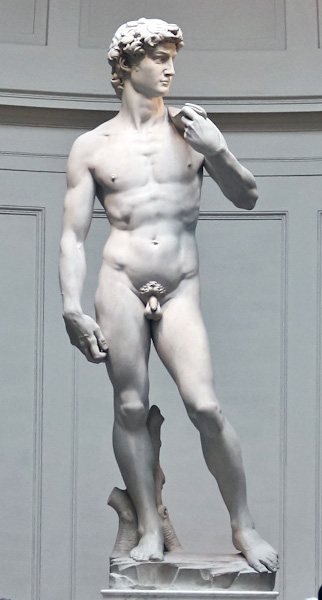
The human body has been a central focus within the humanities since prehistory. Depictions of the human body are included in ancient cave paintings, paleolithic sculptures such as the Venus of Willendorf, classical Greek and Roman statues such as the David, the Terracotta Soldiers of China, and modern television series such as Sex in the City. Throughout history the human body has been represented in an infinite number of ways. Yet the body is more than just a biological object, bodies are socialized through the meanings we assign to bodies. This is evident in the ideas and values that we assign to sex, gender, race, nationality and other categories that not only assign meanings to bodies, they also influence the way the bodies are treated as well as the right, roles and responsibilities that are assigned to people according to the ways the body is classified and categories. This makes it possible to interpret cultures and sociel systems by the ways that bodies are represented.
Watch the video below to get a sense of the multiplicity of ways the body has been represented in painting. Considr the wide variety of techniques and considerations artist takes through realism, depth, dimension, arrangement, proportion and more to assign meanings to the human symbolic form.
The video above describes how an artist’s decisions are oftentimes influenced by cultural values, ideas and motivations. In many cases, the artist nor the viewer may be aware of the values and ideas influencing the work. This complicates the manner in which bodies are represented in the humanities, because the representation of a body is a representation of the people, class and culture to which the body belongs. This makes it critical to examine who is creating the representation, who is being represented, and for whom is the representation created.
Gender, Race and Representation in the Humanities
The humanities provides a lens through which people view themselves and their own culture as well as the way people view groups and cultures they are not a part of. Movies, stories, news reports, photographs and art deliver information about peoples and cultures to an audience that may have little or no prior experience engaging with the peoples and cultures being represented. This is why it is important to think critically about the ways people are portrayed in the humanities.
Critical Theory is an analytical approach to assess and evaluate how power informs social interactions. Studying representations of race and gender in the humanities allows us to learn about race and gender relationships throughout history and across cultures. By studying gendered and racialized representations in the humanities (such as in language, literature, art, music, and popular media), we can interpret how meanings and ideas are assigned to gender and race by certain members of a particular society. This is why it is important to identify the producer of the imagery and the individual or group being produced.
In his documentary, Dream Worlds, Media Studies professor Sut Jhally, examines how representations of women, gender and heterosexual relationships in popular music videos reflects a culture of male entitlement and the hyper-sexualization of women as objects for men’s pleasure. He also reflects on the ways that these representations can influence social and sexual relationships in the real lives of the audience.
Sut Jhally critically examines representation of gender, sex and sexuality in specific music videos by investigating the relationship between those who created the representation (men) and who is being represented (women.) By doing this, he is able to address how status and power relationships between men and women inform and are informed by gendered relationships in the society where the videos are produced.
Along the same lines, Byron Hurt’s documentary film, Hip Hop Beyond Beats and Rhymes, critically examines how race and gender is represented in hip hop music and videos. Hurt’s investigation into the hip hop record industry reveals that the industry is controlled by white record label executives producing music and imagery for a predominantly young white male consumer base.
Although Hurt and Jhally rely on music videos from the 90s, music and media produced by current viral sensation, Takashi 69, shows that the same pejorative representations of race and gender are pervasive today.
Like music videos, a critical and comparative examination of visual art, literature and storytelling can reveal information about gender and race throughout history.

In her book, The Serpent and the Goddess, Mary Condren analyzes how the declining status of women in ancient Ireland during Christianization parallels changes in the mythology of Brigid. The pre-eminent Goddess in early Irish religious traditions was initially considered a powerful female diety and served as the patroness of poetry, smithing, medicine, arts and crafts, cattle and other livestock, sacred wells, and serpents. During the Christianization of Ireland, however, stories and myths about Brigid changed over time. Pre-Christian folklore initially presented her as a woman of immense power and a triple diety. After the arrival of the Christian Saxons, new stories protrayed her as a weak goddess. In time, the goddess Brigid was transformed into a Christian saint of the same name. According to medievalist Pamela Berger, Christian “monks took the ancient figure of the mother goddess and grafted her name and functions onto her Christian counterpart.” Today, St. Brigid is associated with perpetual, sacred flames, such as the one maintained by 19 nuns at her sanctuary in Kildare, Ireland. Both the goddess and saint are associated with holy wells, at Kildare and many other sites in the Celtic lands. Saint Brigid shares many of the goddess’s attributes and her feast day on 1 February was originally a pagan festival (Imbolc) marking the beginning of spring.
Cultural ideas about men and masculinity are also reproduced within the humanities. Ancient mythology of the Greeks and Romans reflects classical ideas about men, power and authority as well as gender relationships between men and men with women. Religious texts codify roles and expectations for men, relations with women, and men’s role in marriage and families.
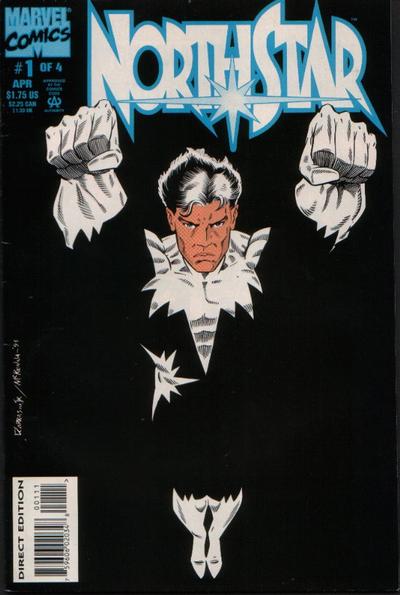
Representations of superheroes in popular American comics have traditionally presented a narrow focus on men, heroism, and masculinity. Representations of ‘superheroes’ provided hyper-masculinized representations for men and boys while at the same time challenging normative ideas. In the article, ‘Superhero Masculinity,’ Steven Jones points out that superheroes can represent new models for men and boys beyond power and authority by revealing binary or dual relationships such as superman and Clark Kent, Batman and Robin, and by presenting the first gay superhero, Northstar, in 1979 with an official coming out (‘I am gay’) in 1992. Changing representations of male superheroes reflects changing cultural norms and values about men, gender and sexuality.
Visit the MOMA learning module and read the brief lessons, The Body in Art and Constructing Gender.
The Politics of Power in Representing Races and Cultures
Critical theory in the late twentieth century identified how relationships of power and representation lend to distinctive patterns in the humanities. In most cases, representations are produced by those who have power, and the powerless are usually the ones being represented. This creates a bias in representative forms. In his book, Orientalism (1978), Edward Said points out the social and political implications associated with power and representation as he described the inconsistencies between representations of Arab men in media and film and his own experiences as an Arab man.
According to Said, representations of the Middle East and Arab cultures had nothing to do with the realities of life in the region and had everything to do with the unequal relationship of power in colonial domination. He defined Orientalism as a prejudiced outsider representation shaped by the attitudes of imperialists in order to justify the occupation of foreign territories and the exploitation of indigenous people who live in those territories. In essence, Said argues that those in power represent the people they oppress in ways that justify their oppression. (fo rmore on this, watch the documentary “Reel Bad Arabs: How Hollywood vilifies a people on Vimeo.)
Said’s analysis primarily targets artistic representations of the Middle East by European artists and writers, yet his critique on representation and power has been expanded to address pejorative representations of colonized and oppressed people throughout the world; Asia, Africa, Latin America, and the indigenous populations of North America. It has informed more critical analysis of race and representation within a cultural group by scholars such as Stuart Hall. The video below gives a synopsis of the underlying thesis in Hall’s work.
The work of Said, Hall and other scholars of critical theory reveals patterns of Othering, a process of creating a representation of a person or group that appears foreign, alien and strange to the viewer. The ‘Other’ is created through Binary Opposition, a key concept in structuralism (a theory of sociology, anthropology and linguistics) that states that all elements of human culture can only be understood in relation to one another and how they function within a larger system or the overall environment. Light is defined in relationship to dark, good needs evil, etc. Binary oppositions are prevalent in the humanities where relationships between different groups of people (rich and poor, white and black, men and women, gay and straight, etc.) are represented. A key aspect of Othering is that the producer and the receiver of what is produced (audience, viewer, listener) are of the same group, but the person or people represented is excluded. These representations create or reinforce boundaries between groups of people and promote prejudice and discrimination of those who are othered in the representation due to fear induced by the representation.
As the identity lesson pointed out, the humanities also provides a platform for people to deconstruct pejorative representations from the past and reconstruct self-representations that present a new interpretation of life and culture from all perspectives. As artists, writers, film makers, philosophers and the like contribute to humanities as a practice, humanities as a field can benefit from the addition of diverse perspectives, unique experiences, and different ways of viewing the world. Literary works such as the novella, A Small Place by Jamaica Kincaid, provides a window into the lived experiences of post-colonialism in the Caribbean. Zora Neale Hurston (Their Eyes were Watching God) and Alice Walker (The Color Purple) are part of an elite league of African-American female writers who take the experiences of African American women from the margins and into the mainstream. Films produced by Spike Lee’s production company, 40 Acres and a Mule Filmworks, aims to redefine representations of blackness in Hollywood while the film, The Joy Luck Club, based on Amy Tan’s first best-selling book, countered popular stereotypes about Asian women. African artists such as El Anatusi and Nnenna Okore are rocking the art world with a unique style that integrates ancient African techniques with cutting edge technologies.
As Thelma Golden points out in her Ted Talk below, the humanities not only reflects a culture, it can also provide a means to change it.
Symbols and Representation in the Humanities
When we enter into the next module which begins the analysis component in this course, it is important to contemplate the power of symbol-making and the socio-cultural politics of representation in the humanities as we dig deeper into various mediums such as literature, poetry, art, film, and other types of expression.
Questions to Consider
- What are symbols and how are they created?
- How can the human body be symbolic?
- How is critical theory applied in the humanities?
- Why is it important to identify the producer and the produced while engaging representations of people?
References and Readings
To learn more about symbols and representation in the humanities, explore the links below.
- Hall, S. (Ed.). (1997). Culture, media and identities.Representation: Cultural representations and signifying practices. Sage Publications, Inc; Open University Press.
- Hall, Stuart. ‘Cultural Identity and Cinematic Representation’ in Permutations of Difference.
- Living Arts Originals website.
- ‘Symbols in Art: Who’s who?’ Smithsonian education.
- ‘Symbols in Art’ Britannica online.
- ‘Electronic Empires: Orientalism Revisted in the Military Shooter’ Hoglund
- Orientalism, Khan Academy
- Students Against Othering
- Byron Hurt. Hip Hop Beyond Beats and Rhymes (documentary)
What did you learn about symbols and representation in this lesson? Take the ungraded quiz below to find out.
[slickquiz id=5]
For Discussion in Canvas
In his article, Electronic Empires, Hoglund applied Edward Said’s theoretical perspective on Orientalism to show how the representations of Arab men in American video games contribute to a pattern of negative representations of Arab people created by people who are not members of the Arab community. Search the internet for another example of Orientalism / Othering in the humanities (film, art, song, games, etc.) and conduct your own analysis using Said’s and or Hall’s theoretical framework by answering the following questions:
- Who is represented and who is doing the representing?
- What types of meanings are assigned to the representation of the person or group?
- What type of bias or prejudice is communicated by the representation?
- In what ways does the representation serve to promote or justify the oppression, exploitation or inequality of the person or people being represented?
- Be sure to embed or include a weblink to the image or representation in your post.
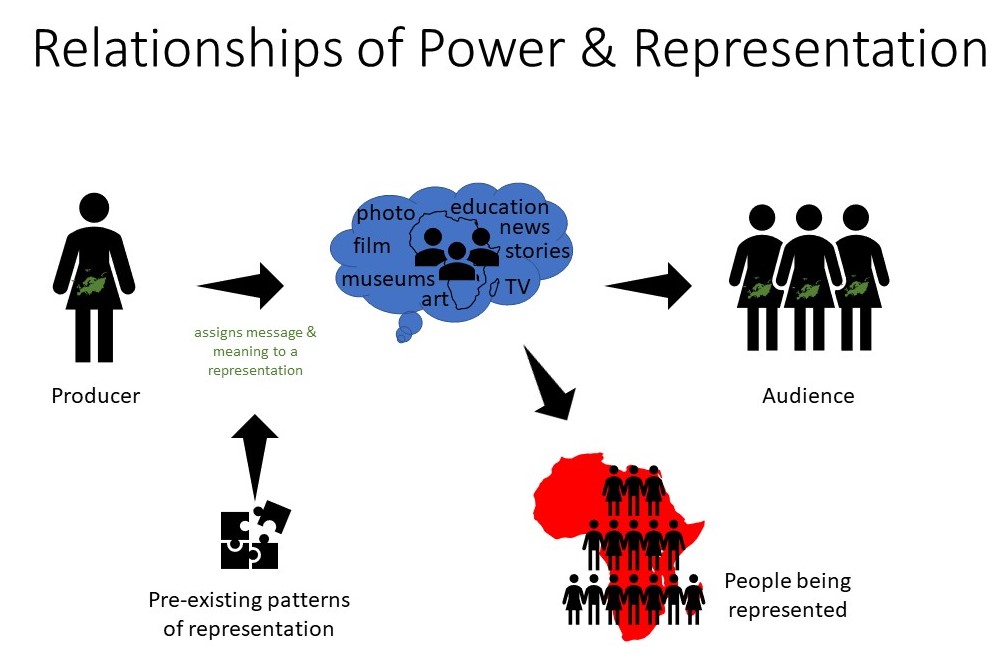
For Your Creative Journal
Create an ‘alternative representation’ that goes against the grain of popular cultural representations, or stereotypes, that are pervasive in media such as art, film, and literature. Use a representation that is taken for granted and reverse it. You can express your alternative representation as a character, short story, image, song, or any medium you prefer. Provide a brief explanation of your representation.
